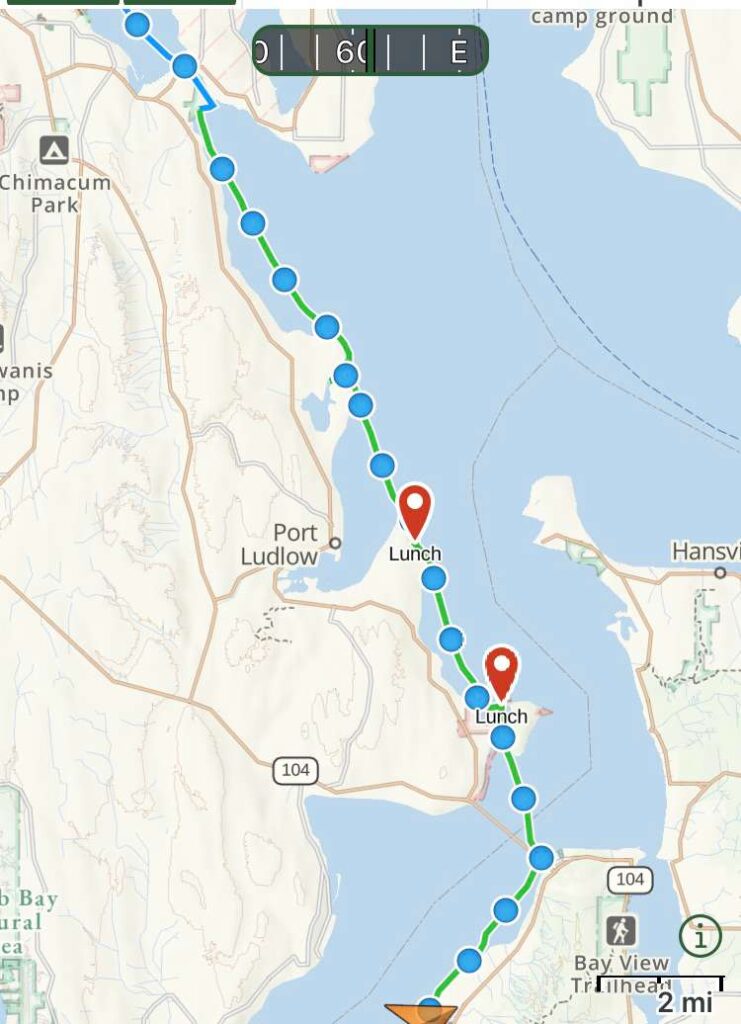
We awoke the next morning to a growing haze in the sky. By now, the forecast called for increased smoke over the weekend and all of our friends had wisely chosen to stay home rather than go camping with us and damage their lungs with wildfire smoke. Our plan was to paddle to Kitsap Memorial State Park where we would camp tonight and then head to either Seabeck State Park or the Seal Rock Campground where we would hunker down for a day or so before pushing on to Tahuya. A storm system was supposed to roll in toward the end of the weekend, bringing rain and hopefully putting an end to the fires, or at least clearing the air of the ever-growing smoke.
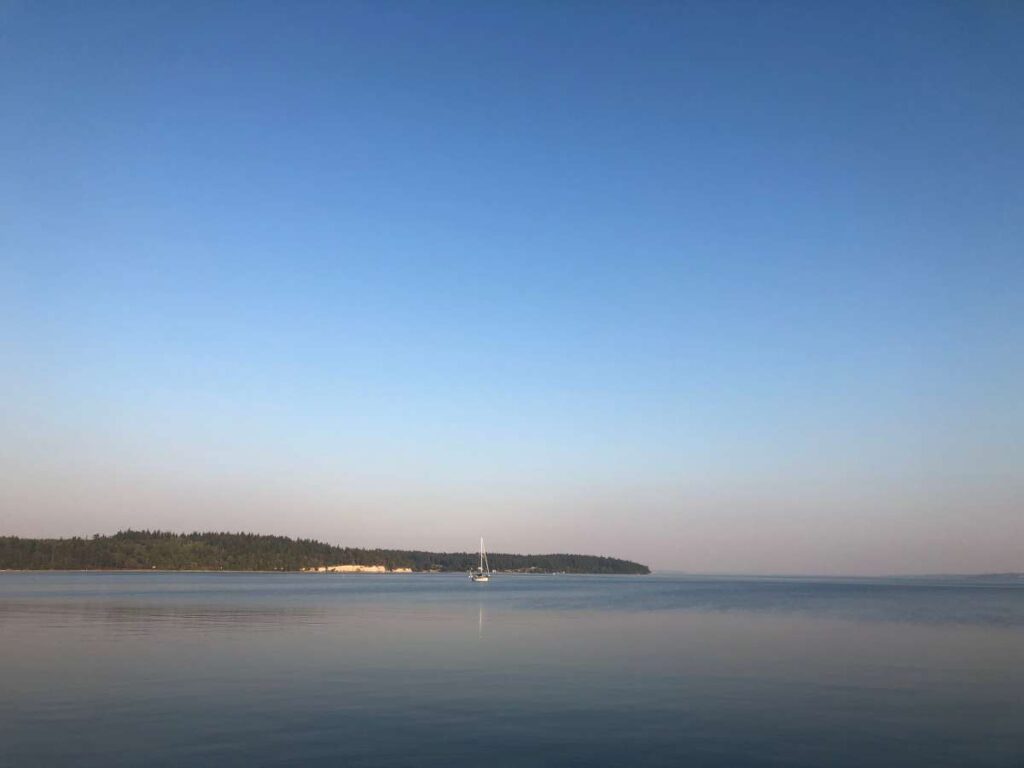
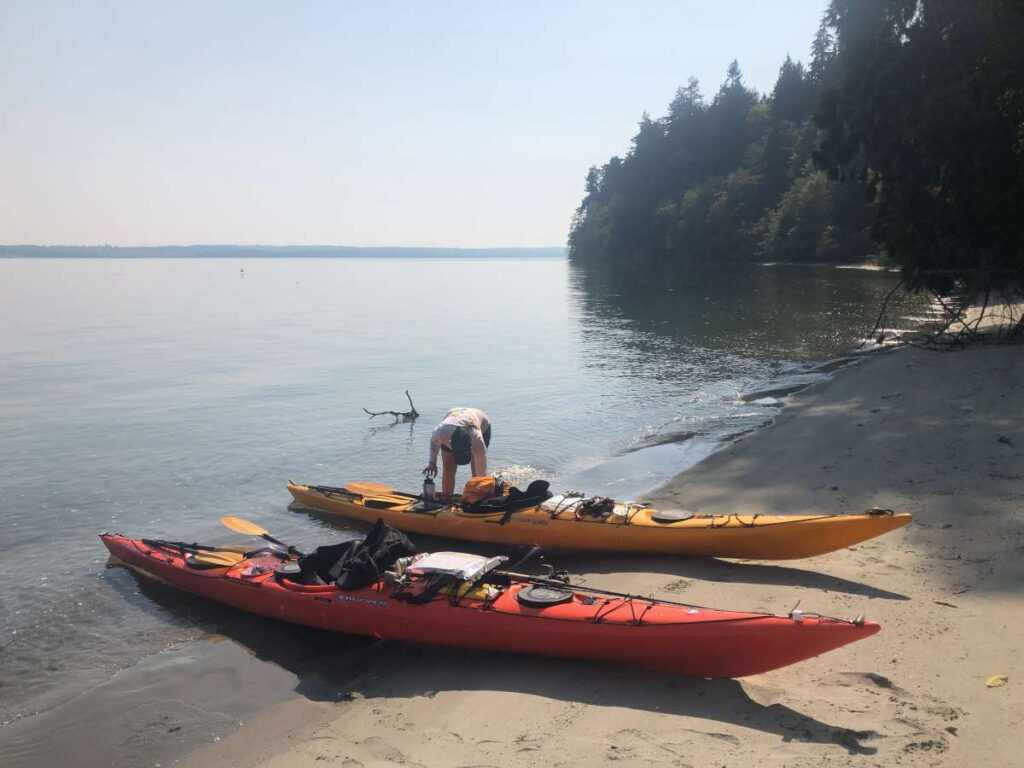
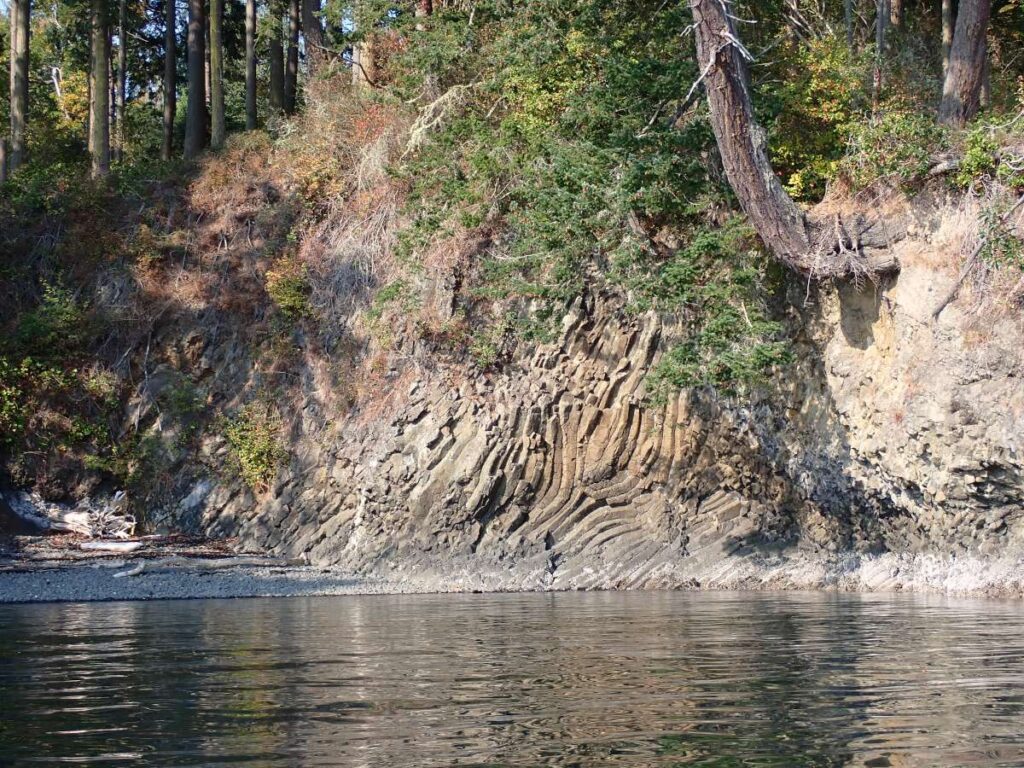
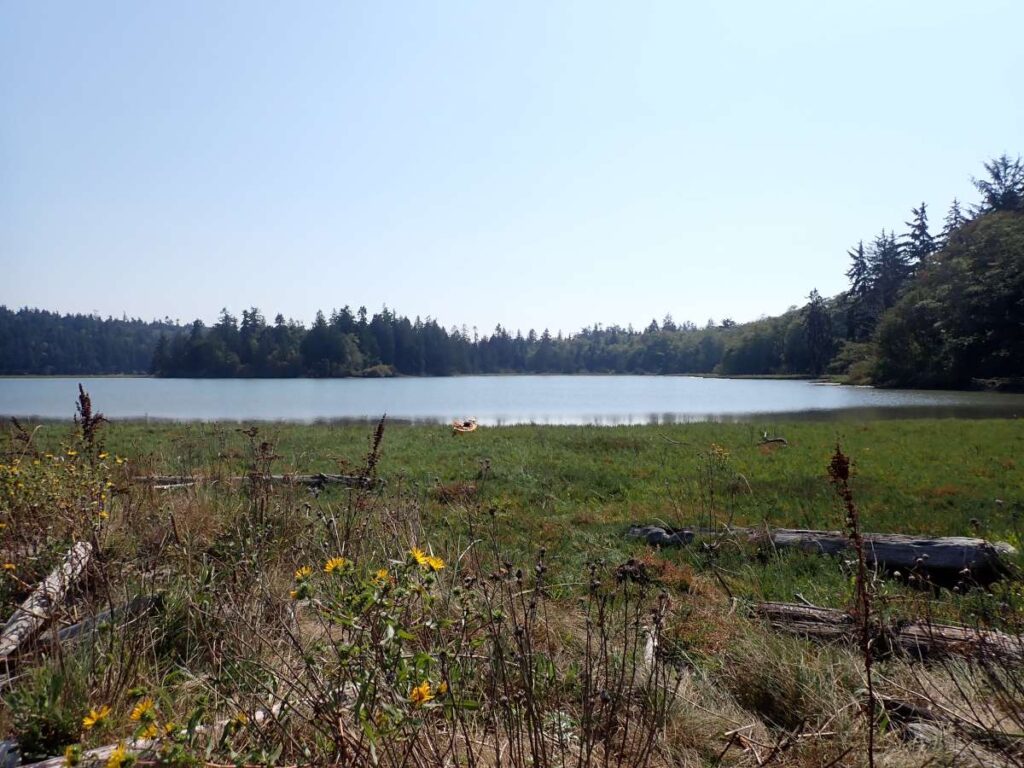
From Basalt Point (which really is a big chunk of basalt) we cut across the mouth of Port Ludlow before making a lunch stop at Tala Point. Guarded on one side by Foulweather Bluff and the other by Tala Point, we were now leaving Puget Sound and entering Hood Canal. From the kayaks, it all seemed the same to us, but it was still nice to reach another milestone on our trip.
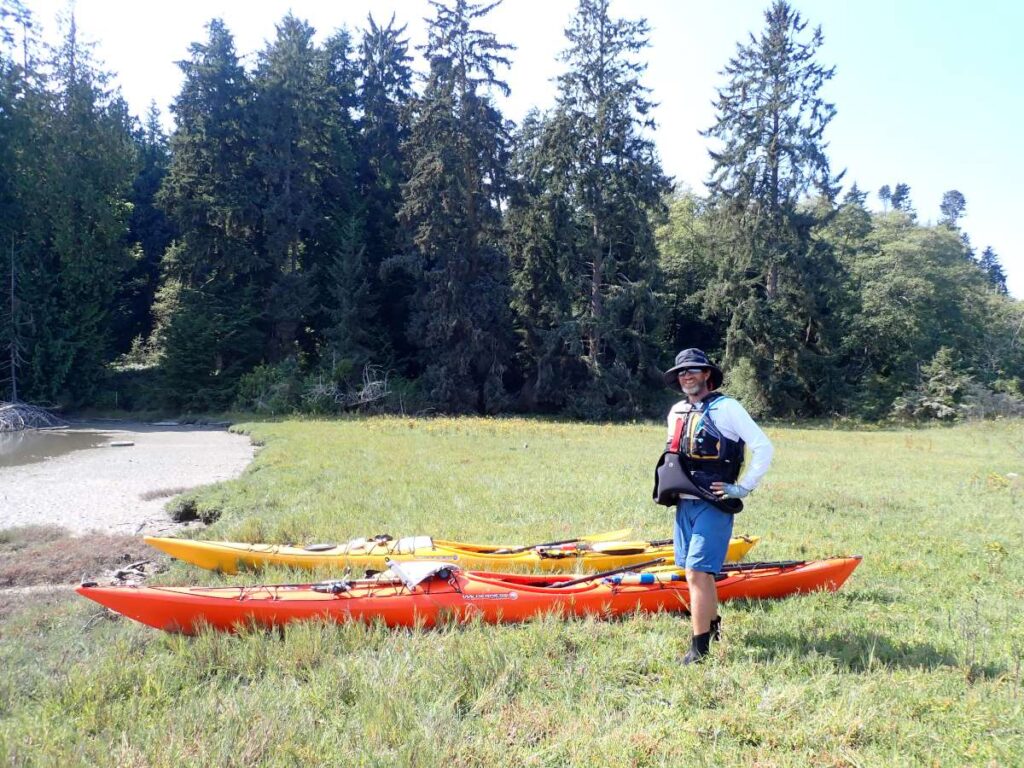
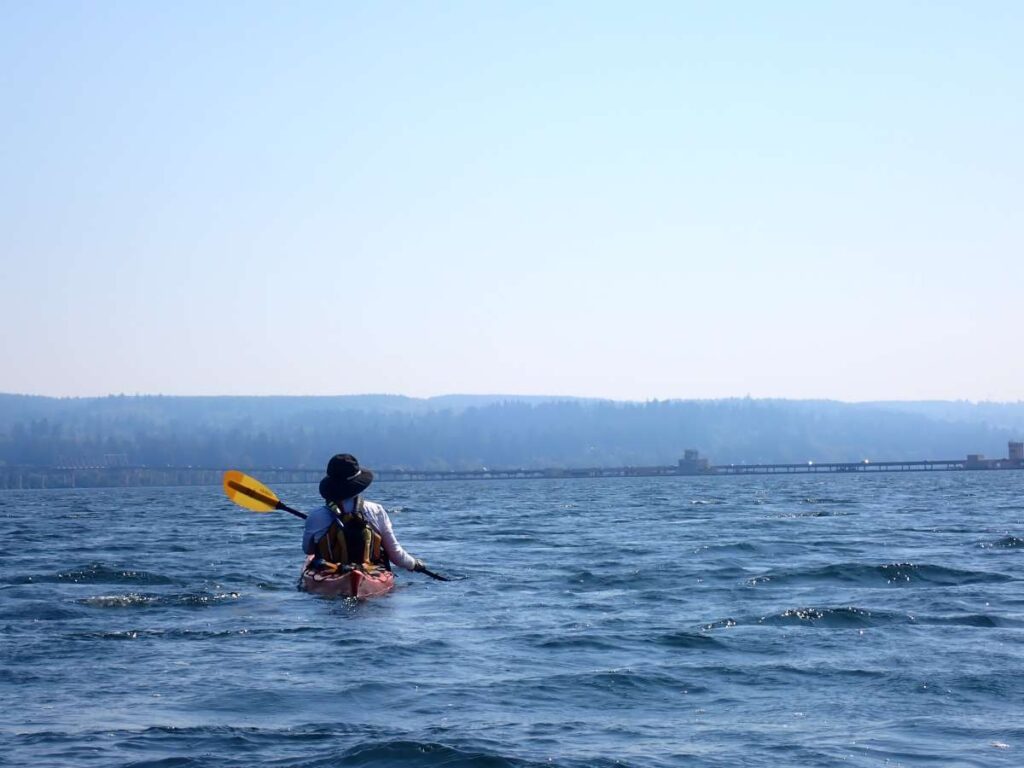
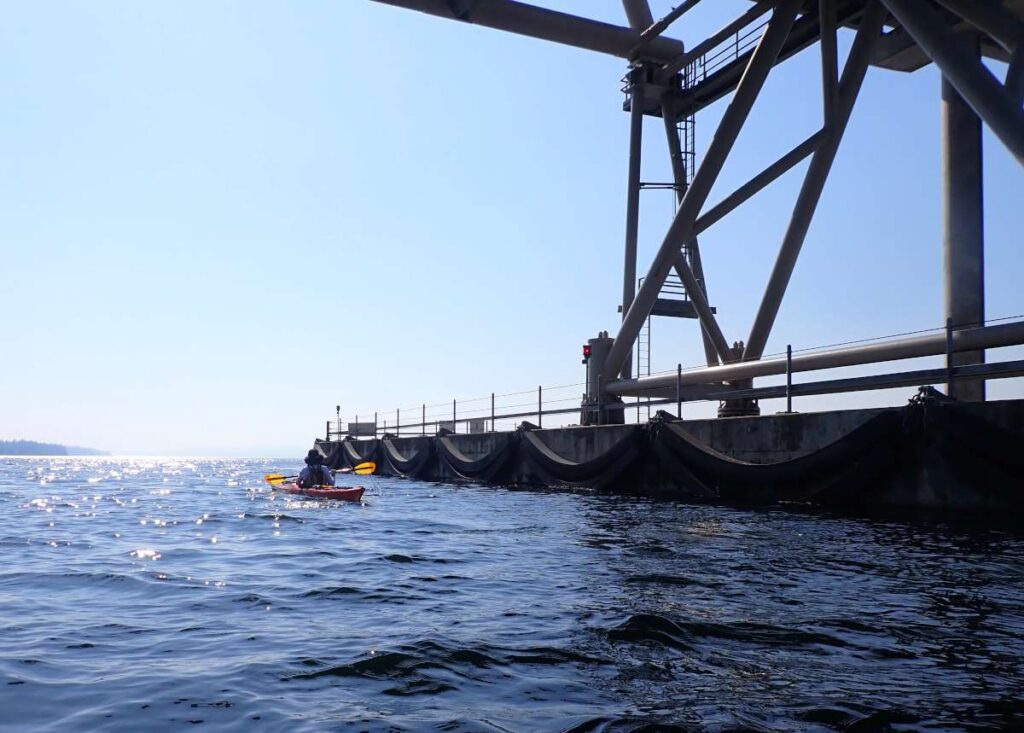
We arrived at Kitsap Memorial State Park around four in the afternoon, though it felt much later than that. The sky was growing more hazy, and even though we still had four hours until sunset, it felt like dusk was approaching. We unload the boats, carrying all of our gear up a long, steep trail and across a wide lawn to the hiker/biker campsites. The park rangers we encountered along the way were kind, but also strict about where we could and couldn’t camp for the night. Because of the Covid restrictions, they made sure that we were nowhere near any other campers. Seeing as we really didn’t have anywhere else to go, we acquiesced and continued to schlep our stuff to a small site buried deep within a grove of tall Douglas fir trees.
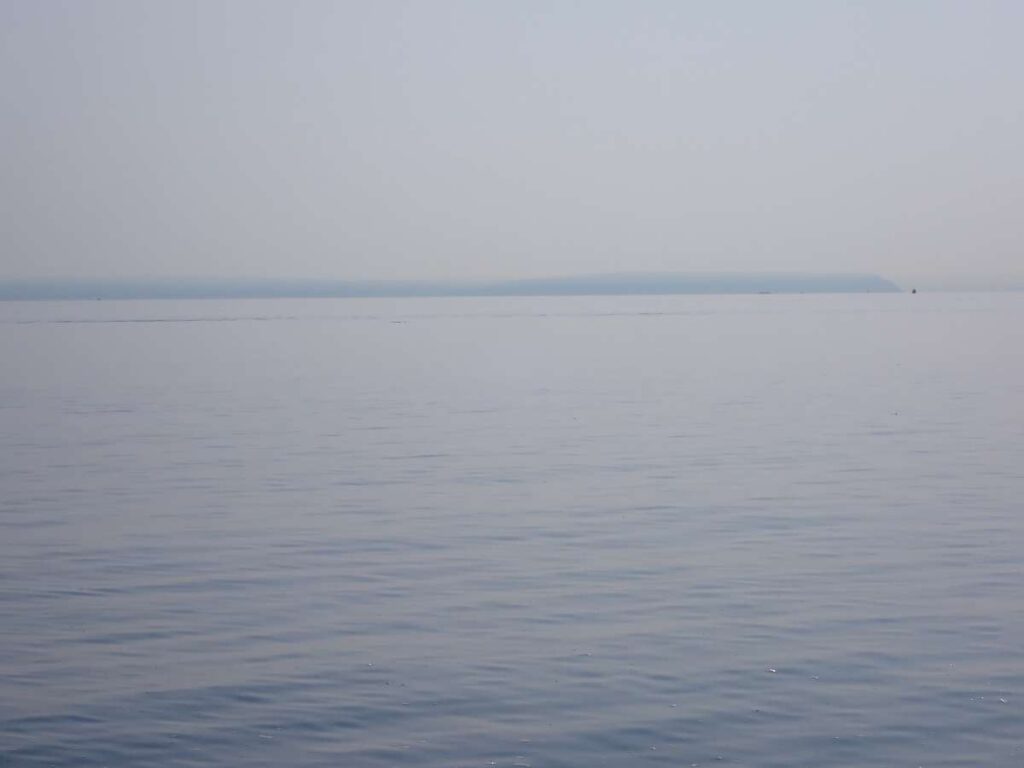
We set up camp and cooked dinner. I can’t remember what we ate, but I specifically remember saving room for beer. Kitsap Memorial is a short walk from a roadside bar called Four Corners. I’d never been in it before, but had driven by many times. So after our meal, we donned our headlamps and walked out to the highway and then along the the two-foot-wide shoulder, cars speeding by in the darkening twilight, to this dilapidated little building with glowing Alaskan Amber and Rainier beer signs in the windows. There were a few folks inside, and more sitting out back in covered beer garden that sort of looked with a carport with a picket fence around it. I walked up to the bar and ordered a bottle of Mac and Jacks and a bag of salt and vinegar chips. Gio got a cider. Cash only, of course.
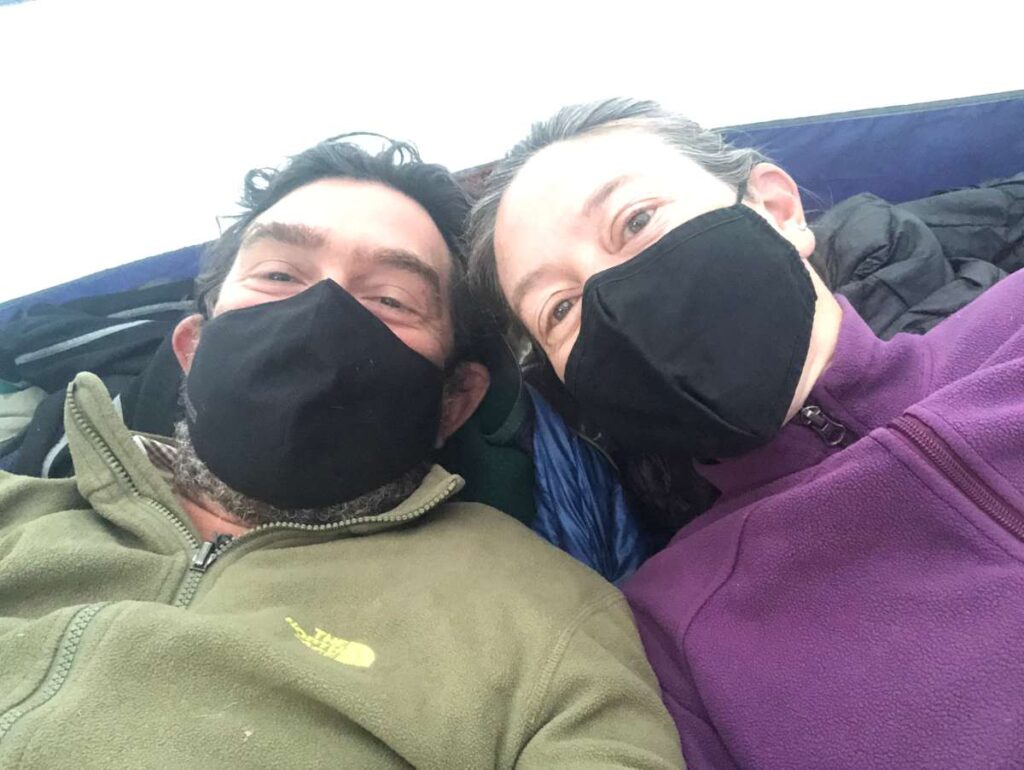
This was Thursday evening. We decided to forego paddling on Friday and hoped that things would take a turn for the better on Saturday when we could get back on the water and make our way down the rest of Hood Canal. Giovannina called her sister Oriana to see if she and her husband Darren would be interested in spending Friday with us. They said they would be happy to join us. They could leave the girls with Tim and Angela, the grandparents, and were looking forward to getting out of the house for the day.
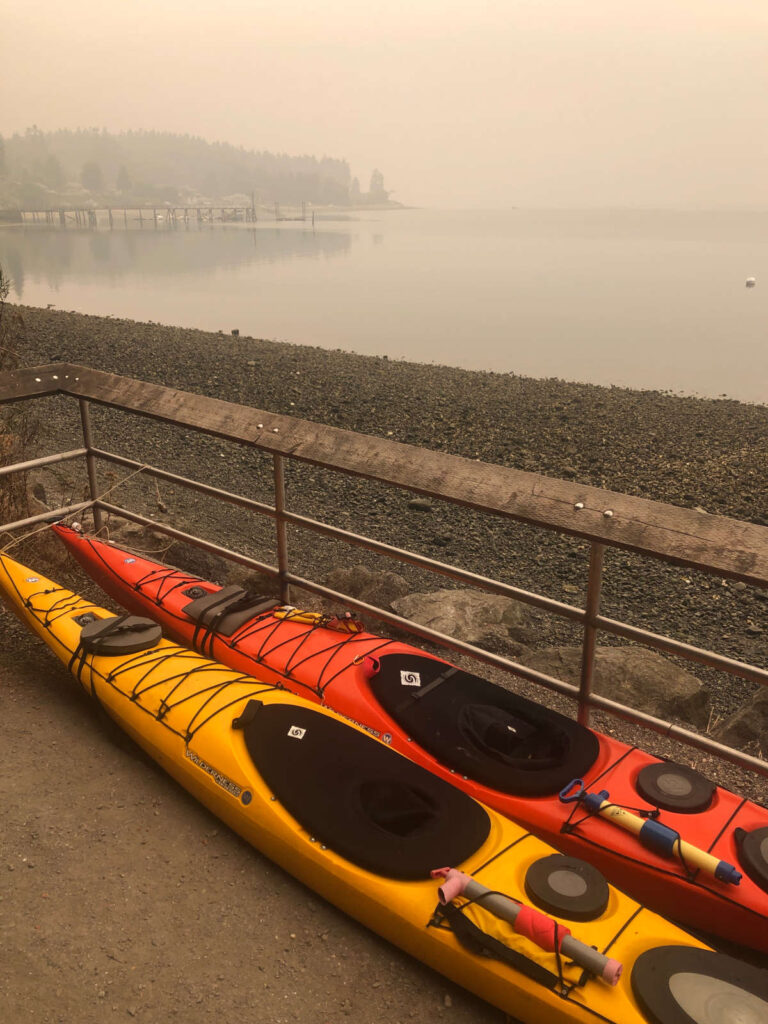
We spent Friday with Darren and Oriana, having lunch in the quaint little village of Port Gamble and then returning to Kitsap Memorial to play our own version of horse shoes. Lacking actual horse shoes, we just used our own shoes, seeing who could throw theirs the closest to the metal stakes in the sandy pit. We called it simply “Shoes!” and it provided much more entertainment than you might expect for a bunch of forty-somethings. The beer probably helped.
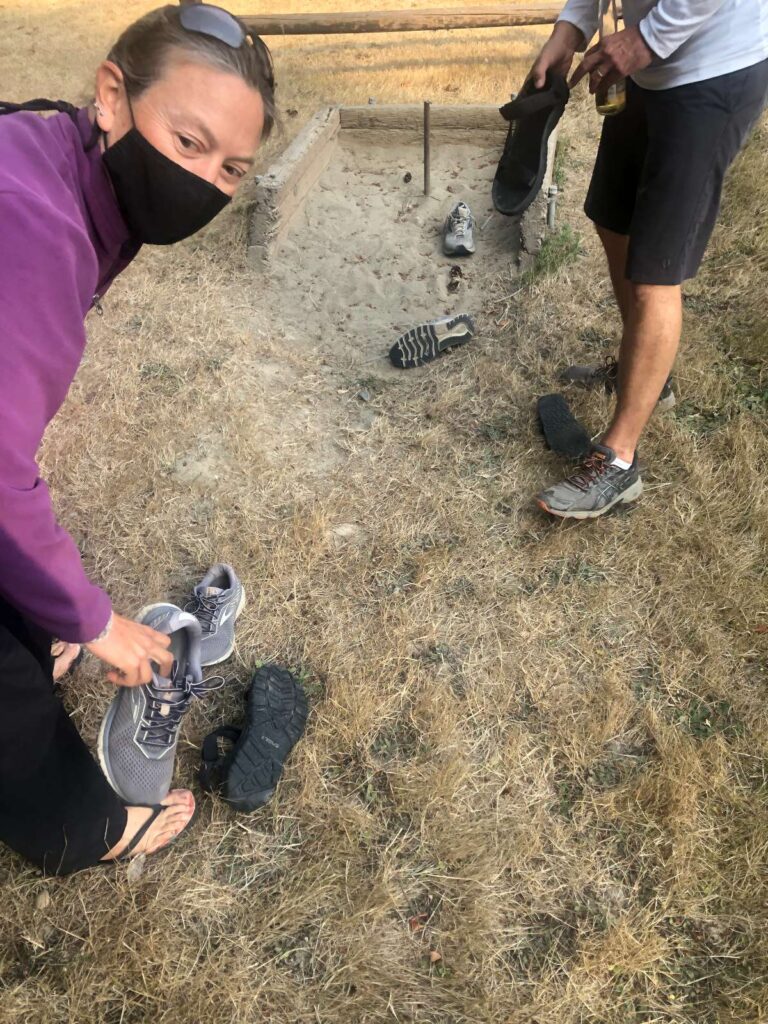
Looking back, we probably should’ve just gone home with them, but our optimism persisted, and it wasn’t until Saturday morning when we awoke to a smoke so thick we could barely see a hundred yards, that we decided to call the trip. It had been an amazing six weeks (forty-two days to be exact) and it just didn’t make any sense to continue paddling through toxic air with zero visibility. So we called Tim, and he and Oriana drove our Subaru over from Seattle to get us. What would’ve taken us two days of paddling took them two hours of driving.
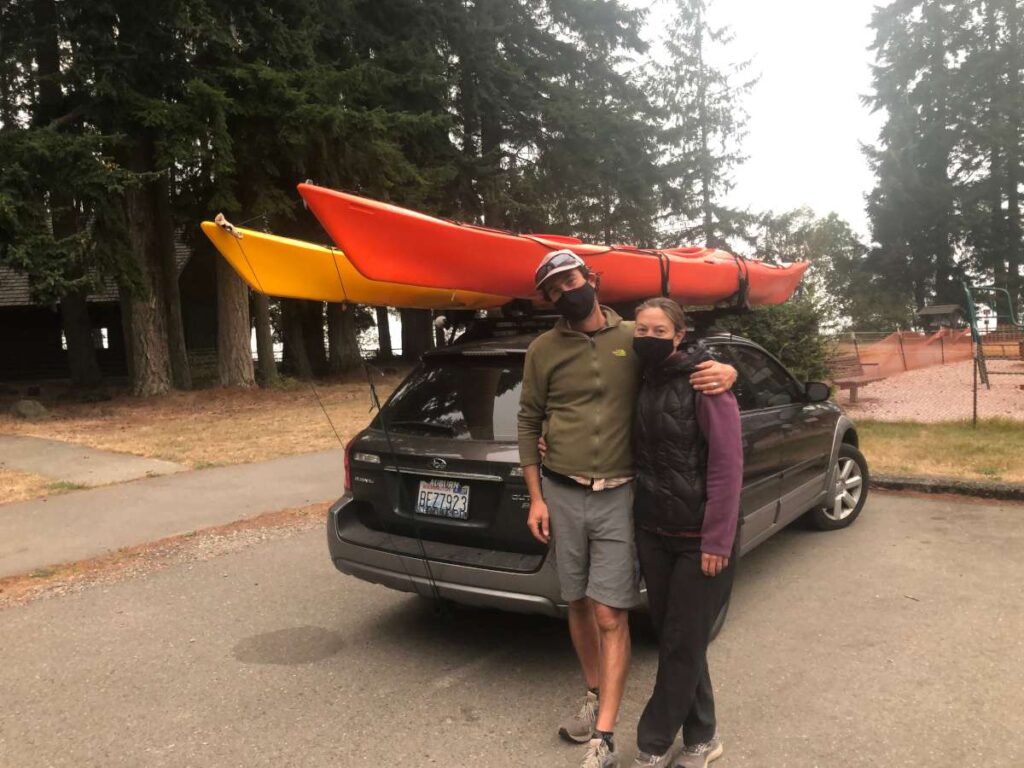
We loaded all of our gear into the car and then put the kayaks on top, securing them down with the cam straps. It was a sad way to end the trip, but we’d had an amazing adventure and really weren’t that upset about it. We knew the end was coming soon, and it just happened a few days before we wanted it to. This the nature of adventures. Thankfully, we were both healthy and safe and it was easy for our loved ones to get us. In the end we paddled 308.1 miles (at least that’s what the GPS says), which I have to say is not a bad way to spend a pandemic.